#sap beetle
Text


Bug of the Day
Found this cool sap beetle feeding on moth bait last summer.
(Glischrochilus sanguinolentus)
#Glischrochilus sanguinolentus#Glischrochilus#Nitidulidae#sap beetle#beetle#Coleoptera#insect#BotD#bug of the day
130 notes
·
View notes
Photo

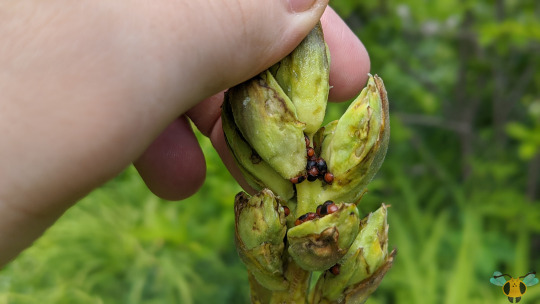



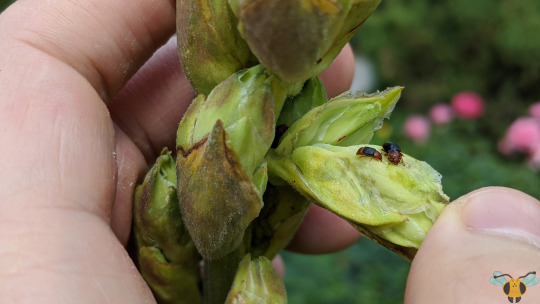




Brown Yucca Beetle - Caplothorax melanopterus
In Picture 1, it looks like I’ve stumbled upon these familiar, tiny Beetles in the middle of a council session. The four subordinates eagerly listen as the head Beetle calls the meeting to order, though it appears mooning its audience afterwards. It may have mooned since a majority of the Beetles are galivanting along the yucca stalk, tucked into the flowers and recesses of the buds. To those who made the meetings, I wonder what the topic of discussion would be that day. Perhaps their reassignment to the genus Caplothorax? Formerly they were assigned to the Carpophilus genus (other posts have been changed to reflect this). If only they knew that they would be showcased in the 700th post on this blog! It’s been quite some time, but I’m thrilled this blog continues to grow year after year, I’m grateful for all the insects (both old and new) I can share here and I’m further grateful for everyone who comes to visit the blog, and to all those I hold dear who contribute to the blog. Wherever you are, reading or watching, my sincerest thank you, and I hope you’ll continue to visit my blog in the future. If only to identify an insect or look at my photography. Many hundreds of posts will come, and more beyond. For today, a revisit to the tiny Sap Beetles that call yucca plants home. And year after year, to this day they’ve called my yard home, so observing them has shown me many of their facets.
Year after year, they’re always scampering on the same 5-8 yucca stalks that emerge during the summer. They nibble on the developing flowers, mate and lay their eggs. The emerging larvae mine the petals and feed on the calyx (where the petals connect beneath). Despite my many observations of these little beans, I’ve never once seen a larva feeding. I seem to always miss them as the petals wither and begin falling off before I notice. The flowers bloom well enough, but when the Beetles come out, the plant must become a food source. Fortunately, the damage is never terrible: fruits are always plentiful and the Beetles and other visitors to the stalks live good lives (Yucca Moths as well, apparently). Inversely, if you have yucca plants to care for in your yard, keep an eye on which Bugs call the yucca home! The Beetles are distinct enough, but if you pay them no mind, you may miss a similar looking insect known as the Yucca Plant Bug (Halticotoma valida)! That specie has been described as a much greater pest to the leaves and overall health of the yucca plant. Fascinating how the Bug and the Beetle appear similar in coloration to each other (orange heads and abdomens, dark wings). Is this a coincidence, mimicry, convergent evolutions or has feeding influenced their adult shell’s color palate?
Pictures were taken on June 27, July 10 & 11, 2020 with a Google Pixel 4. Happy 700th post! Thank you everyone for reading and seeing the photography.
#jonny’s insect catalogue#ontario insect#beetle#brown yucca beetle#sap beetle#coleoptera#insect#entomology#nature#toronto#2020#june2020#july2020#milestone#100 post milestone#700th post#invertebrates
1 note
·
View note
Note
I consider myself very bug-phobic. I just get freaked out by them and it makes my entire self shake, but I think I'm getting better at it! Today, I didn't have my glasses on and removed something from my work uniform, when the thing in my hand started wriggling I freaked the hell out and shook my hand and almost fell to the floor (my phobia is pretty bad). I put on my glasses and saw he was just a cute little ladybug with a bite of leaf in his mouth and thought "Ah damn sorry to disturb your meal." I named him Hudson and grabbed some laminated paper from work to escort him outside. This was the first time in ten years I've had a big crawl on me and I haven't absolutely had a panic fit. Hudson is a real bro.
yay!! baby steps!!! (owo)
silly Hudson and his salad mustve been so confused lol, glad you were able to get him outside so he could finish his leaf in peace (>w<)
#ladybugs are pretty good exposure i think since theyre so small and cute and generally wont try to bite :3#they do fly but being a beetle and all its much slower and clumsier than say a fly#theyre also good for gardens cause they also eat tinier bugs that sip all the plants sap!
11 notes
·
View notes
Text
"I just can't believe it...... he's dead..."
(Murmur from @sappedart. Ditto from @jayjar100)

This is a reference to this video from Studio C. ^^
youtube
#sgigart#bug fables#bug fables oc#murmur the mimic spider#ditto the beetle#not my ocs#zant the zombiant#Zant is the kind of guy to pull pranks like these ngl. ovo#i might make this into an animatic of sorts someday.#if Sapped and Jayjar don't mind me doing so ofc. ^^#Youtube
20 notes
·
View notes
Text


The lesbian explorers
#hi these two are my beloved bugs#dryas a rosy maple moth! Tel is a sap beetle!#drya tag#tel tag#enbee.txt#bug fables#bug fables oc#my art
52 notes
·
View notes
Photo

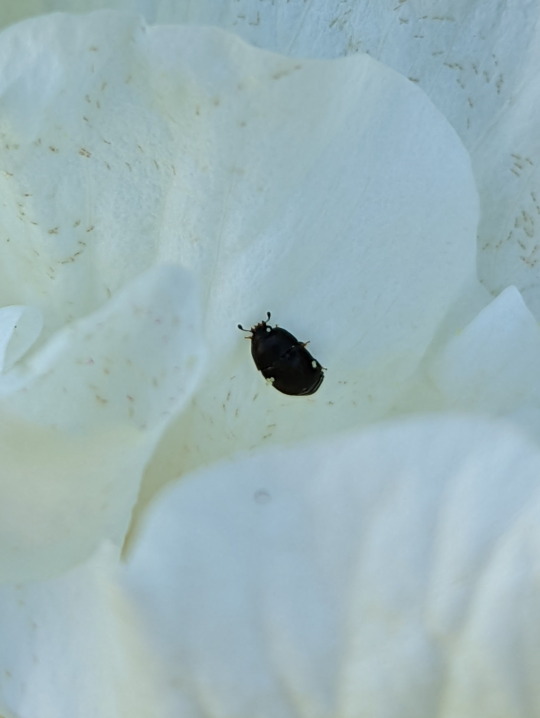
Small Sap-feeding Beetles inside a Hibiscus flower.
Unknown, Nitidulidae
Foodplant: Hibiscus tiliaceus
30/05/22
#Hibiscus#Nitidulidae#unknown#Sap-feeding Beetles#Coleoptera#Cucujoidea#Cucujiformia#Polyphaga#beetles#bugs#bugs tw#bugblr#insects tw#insectblr#entomology#insecta#Arthropods#Arthropoda
7 notes
·
View notes
Text
Blog post is ready for you guys on Flickr! Check out what I'm wearing over there xx (P.S. I had a name change in-world)
Big feature to XX (Hope) for these cute little gifts!!! I'm in love! I made sure to wear them in a brighter colour so you could see more details on them. I'll be wearing this for a little while longer so if you catch me in-world you can see the quality is really great and I would highly recommend a lil shopping spree in her store to support <3
#LAL#{Horrid}#Neon#[SB]#[Lewk]#Sap#[ONYX]#ACHROMA#[TRAP]#JustYaska#Yaska#Hoodlem#Hexed#[Heaux]#[REVERIE]#!ONILAB#PrettyLiars#mercurial#SFC#Beetle#FOXY#FoxyHair#IVY#Lelutka#Evox#Raven#LIVIA#Moon.#Otaku#RAWR!
0 notes
Text
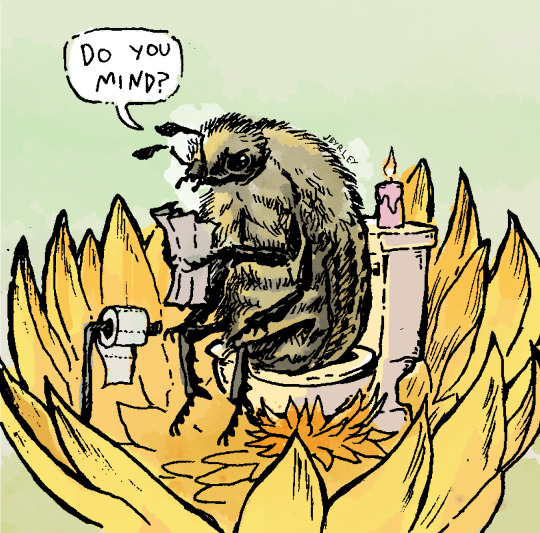
Beetles can be messy pollinators, eating leaves, drinking sap, and pooping in their host flowers. Neat!
2K notes
·
View notes
Text
Eyed Elaters (Alaus)
eyed elater click beetles, like this Alaus oculatus from Florida, are the biggest click beetles (Elateridae) found in temperate North America.
Click beetles are best known for their eponymous clicking ability- a sort of elastic locking mechanism on their thorax can snap open with a loud clicking sound, which helps them startle or escape the grasp of predators and allows them to launch themselves into the air when overturned (you can see that in slow motion at the end of the video)
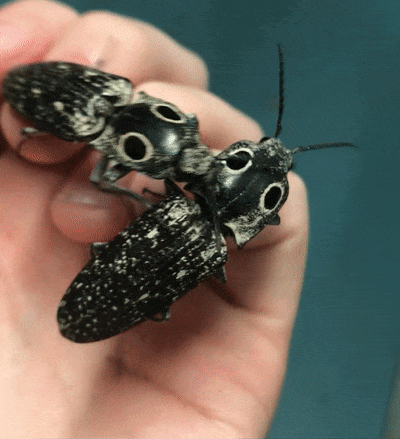

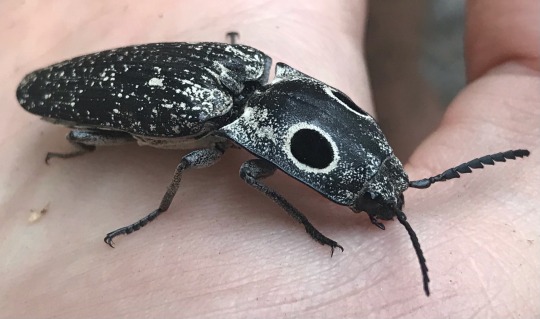
(more elating click beetle trivia below!)
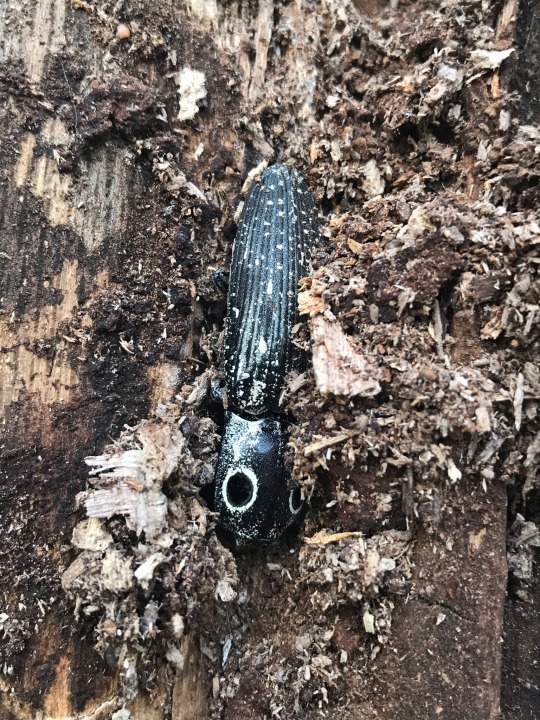

They live around decaying trees and logs, the adults feeding on sap flows and other sugary liquids while the predatory grubs use their powerful jaws to tunnel in search of other wood-dwelling insect larvae to devour (by contrast many smaller click beetle larvae, often called wireworms, feed on rotting wood itself or other plant matter). To rear these beetles in captivity it’s necessary to keep the larvae in containers made of a hard material like glass, as they’ll chew through plastic and escape (I learned this the hard way the first time I found and attempted to raise a grub).
There are 6 Alaus species in the US, the largest of which can be over 5 cm long. Two are found in forests along the east coast- A. oculatus, the eastern eyed elater (below, left) and its smaller relative A. myops, the blind elater (right).


Even though the larvae don't feed directly on decaying wood, different Alaus species prefer different trees- oculatus breeds in dead oaks and other hardwoods, while myops found in the same habitats only use well-rotted pines.
#beetles#elateridae#click beetle#coleoptera#Alaus#eyed elater#Alaus oculatus#Alaus myops#bugs#bugblr#entomology#insects
2K notes
·
View notes
Text
March 2024 witch guide
Full moon: March 25th
New moon: March 10th
Sabbats: Ostara-March 19th
March Worm Moon
Known as: Crow Moon, Eagle Moon, Goose Moon, Hrethmonath, Lenting moon, Lentzinmanoth, Moon of Snowblind, Moon of Winds, Plow Moon, Sap Moon, Seed Moon, Sore Eyes Moon, Storm Moon, Sugar Moon & Wind Strong Moon
Element: Water
Zodiac: Pisces & Aries
Nature spirits: Air & water spirits & Mer-people
Deities: Artemis, Astarte, Athena, Cybele, Isis, Luna & Minerva
Animals: Boar, cougar & hedgehog
Birds: Sea crow & sea eagle
Trees: Alder, dogwood & honeysuckle
Herbs: Apple blossom, broom, high John root, Irish moss, pennyroyal, wood betony & yellow dock
Flowers: Daffodil, jonquil & violet
Scents: Apple blossom & honeysuckle
Stones: Aquamarine, bloodstone, jasper, opal &topaz
Colors: Pale-green, red, violet, yellow & white
Energy: Balance, beginnings, dream work, energy breaking into the open, exploring, fertility, inner development, karma, prosperity, spirituality, success & truth seeking
For many years, it was thought that the name "Worm Moon" referred to the earthworms that appear as the soil warms in spring. This invites robins and other birds to feed—a true sign of spring.
However, more research revealed another explanation. In the 1760s, Captain Jonathan Carver visited the Naudowessie (Dakota) and other Native American tribes and wrote that the name Worm Moon refers to a different sort of “worm”—beetle larvae—which begin to emerge from the thawing bark of trees and other winter hideouts at this time.
March’s full Moon often plays a role in religion, specifically in Christianity, this Moon is known as the Lenten Moon if it is the last full Moon of the winter season (i.e., if it occurs before the spring equinox) or as the Paschal Full Moon if it is the first full Moon of spring (i.e., if it occurs after the spring equinox).
Ostara
Known as: Alban Eiler, Lady Day & Spring/Vernal equinox
Season: Spring
Symbols: 8-spoked wheel, butterflies, chicks, decorated baskets, eggs, feathers, jellybeans, lambs, rabbits, seeds, shamrocks, spring flowers & sunwheels
Colors: Green, indigo, light blue, pastels, pink, red & yellow
Oils/Incense: African violet, florals, ginger, jasmine, lotus, magnolia, rose, sage & strawberry
Animals: Cormorant, hare, hawk, rabbit, sheep, sparrow & swallow
Mythical: Dragon & Unicorn
Stones: Amethyst, aquamarine, bloodstone, moonstone, red jasper & rose quartz
Food: Dairy foods, eggs(hard boiled), fruits, honey, honey cakes, leafy greens, vegetables, pine nuts, pumpkin, sunflower seeds, sprouts & waffles
Herbs/Plants: Acorn, cinquefoil, dogwood, ginger, Irish moss, olive, strawberry & woodruff
Flowers: Celandine, crocus, daffodil, dandelion, Easter lily, jasmine gorse, honeysuckle, hyssop, iris, jonquil, linden, narcissus, peony, snowdrop, tansy & violet
Goddesses: Aphrodite, Ariadne, Artemis, Athena, Coatlicue, Cybele,Demeter, Diana, Eos, Eostre, Flora, Gaia, Hera, Idunn, Iris, Ishtar, Juno, Minerva, Persephone, Venus & Vesta
Gods: Adonis, Attis, Celi, Cernunnos, Coel, Dagda, Dalon ap Landu, Dumuzi, Green Man, Lord of the Greenwood, Mithras, Odin, Osiris, Ovis & Pan
Issues, Intentions & Powers: Agriculture, balance, beauty, fertility, growth, life, love & rebirth/renewal
Spellwork: Air magick, fertility, new beginnings & water magick
Activities:
• Go on a hike/walk & look for signs of spring
• Add Ostara symbols to decorate your altar space
• Plant vegetable &/or flower seedlings
• Decorate eggs with bright colors
• Set your intentions for the weeks/months ahead
• Start a new class or hobby
• Create eggshell candles
• Make plans & new routines for the future
• Participate in rituals & ceremonies that connect you with energy & the life force of nature
• Have a feast with your friends &/family with sprouts & leafy greens
• Bake hot cross buns or lavender/lemon flavored treats
• Clean & de-clutter your home
• Try a re-birthing/ renewing ritual
• Bring fresh flowers or plants into into the home
• Host a spring & floral themed tea party
• Make egg based food dishes & desserts
This holiday marks the Spring Equinox, which happens before March 19-22. It is the second of three spring celebrations (the midpoint between Imbolc and Beltane) during which light & darkness are again in balance, with light on the rise. It is a time of new beginnings & of life emerging further from the grips of winter.
There is much debate regarding the origins of Ostara due to the lack of primary sources about this sabbat. One theory is the name of Ostara came from the Anglo-Saxon goddess Eostre. Another theory is that Eostre is more of a localized goddess in Kent County, England. Despite the questions of her origins, Eostre is associated with modern-day Pagan traditions of Ostara.
There is no evidence that the ancient Greeks or Romans celebrated Ostara, although they did celebrate their own spring festivals, such as the Roman festival of Floralia & the Greek festival of Anthesteria. It was a time to honor the returning sun, fertility & rebirth.
Related festivals:
• Nowruz- March 19th
Nowruz marks the first day of spring & renewal of nature. It is celebrated on the day of the astronomical vernal equinox. It is also celebrated as the beginning of the new year by people all around the world for over 3,000 years in the Balkans, the Black Sea Basin, the Caucasus, Central Asia, the Middle East & other regions.
It promotes values of peace & solidarity between generations & within families as well as reconciliation & neighbourliness. Nowruz plays a significant role in strengthening the ties among peoples based on mutual respect & the ideals of peace and good neighbourliness.
Traditional customs of Nowruz include fire & water, ritual dances, gift exchanges, reciting poetry, symbolic objects & more; these customs differ between the diverse peoples & countries that celebrate the festival.
• Holi- March 25th
Holi is a popular & significant Hindu festival celebrated as the The festival of colors, Love &Spring. It commemorates eternal and divine love of the deities Radha & Krishna. Additionally, the day signifies the triumph of good over evil, as it celebratess the victory of Vishnu as Narasimha over Hiranyakashipu. Holi originated & is predominantly celebrated in the Indian subcontinent, but has also spread to other regions of Asia & parts of the Western world through the Indian diaspora.
Holi also celebrates the arrival of Spring in India, the end of winter & the blossoming of love. It is also an invocation for a good spring harvest season. It lasts for a night & a day, starting on the evening of the Purnima (full moon day) falling on the Hindu calendar month of Phalguna, which falls around the middle of March in the Gregorian calendar.
• Easter- March 31st
also called Pascha or Resurrection Sunday is a Christian festival & cultural holiday commemorating the resurrection of Jesus from the dead, described in the New Testament as having occurred on the third day of his burial following his crucifixion by the Romans at Calvary c. 30 AD. It is the culmination of the Passion of Jesus Christ, preceded by Lent (or Great Lent), a 40-day period of fasting, prayer, & penance.
Easter traditions vary across the Christian world & include sunrise services or late-night vigils, exclamations & exchanges of Paschal greetings, flowering the cross & the decoration and the communal breaking of Easter eggs (a symbol of the empty tomb) among many others. The Easter lily is a symbol of the resurrection in Western Christianity traditionally decorates the chancel area of churches on this day & for the rest of Eastertide. Additional customs that have become associated with Easter & are observed by both Christians & some non-Christians include Easter parades, communal dancing, the Easter Bunny & egg hunting.
Other Celebrations:
• Festival of Luna- March 31st
Is a feast day honoring the Goddess Luna who is seen as the divine embodiment of the Moon.
The Temple of Luna was a temple on the Aventine Hill in Rome, dedicated to Luna, the moon goddess. Its dedication was celebrated on March 31st, thus the celebration.
According to Tacitus, it was built by king Servius Tullius. However, the first confirmed reference to a temple to Luna dates to 182 BC & refers to one of its doors being knocked off its posts by a miraculous blast of air & shot into the back of the Temple of Ceres. That account probably places the temple at the north end of the hill, just above porta Trigemina. The temple was struck by lightning around the time of the death of Cinna, as was the temple of Ceres. After the destruction of Corinth, Lucius Mummius Achaicus dedicated some of his spoils from the city to this temple. It was destroyed in the Great Fire of Rome in 64 AD & not rebuilt.
Sources:
Farmersalmanac .com
Llewellyn's Complete Book of Correspondences by Sandra Kines
Wikipedia
A Witch's Book of Correspondences by Viktorija Briggs
Encyclopedia britannica
Llewellyn 2024 magical almanac Practical magic for everyday living
#correspondences#sabbat#wheel of the year#ostara#Worm Moon#witch community#witchblr#wiccablr#paganblr#witchcraft#witches of tumblr#tumblr witch community#tumblr witches#full moon#witch guide#witch tips#traditional witchcraft#spellbook#grimoire#book of shadows#beginner witch#baby witch#full moon magick#witchcore#GreenWitchcrafts#pagan#wicca#witch#witchy tumblr#spells
231 notes
·
View notes
Note
do you know any cool moth facts? i totally understand if not, i just wanna get over my phobia by noticing how cool they r ^_^
thanks ! have a good day
“moths” is a huge category of animals, so if you were asking for cool adaptations in particular species you’ll have to be more specific because it’s impossible for me to know where to start!
but a few general moth facts:
moths have been around a long time, and some basal types still exist that have mandibles (like the usual bug mouthparts you see in beetles/ants) instead of a tube proboscis for drinking nectar like most of the big moths you see. these moths are all super tiny and mostly eat pollen.
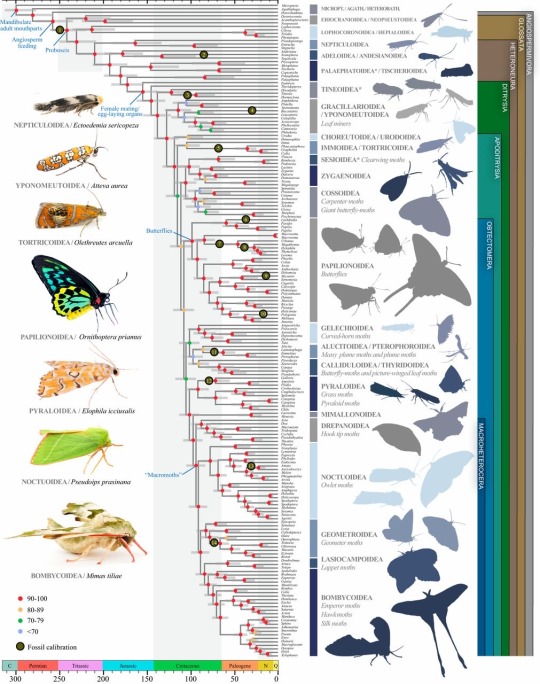
as you can see from this phylogenetic tree, butterflies are moths! or rather “butterfly” is just the English word for a particular group of diurnal Lepidoptera, sort of like how birds are a particular group of dinosaurs (but it’s not common to refer to them as such outside of taxonomy or a joke)
most moths are nectar-feeders, but others feed on decaying fruit, tree sap, or honeydew, and silkmoths and many hawkmoths do not feed at all as adults, relying on larval fat reserves to power them through their brief adult lives
there are numerous diurnal moths, beyond just the butterflies. family Uraniidae are some of the most dramatic:
moths have some of my favorite mimicry examples of any group of insects:
many moths mimic bird poop (birds aren’t likely to look for meals out of their own poop!) but Macrocilix maia takes it a step further and has patches of colored scales that look exactly like red-eyed, shiny-winged flies eating the bird poop!
a number of tiny moths’ wings mimic jumping spiders, which might seem an odd choice until you realize that jumping spiders—predators of these moths—have excellent facial recognition. even if the jumpers would eat another spider, the oOOo pattern tricks them into thinking their that spider is looking right at them, and can’t be taken by surprise.
phylotree from: https://www.pnas.org/doi/10.1073/pnas.1907847116
moth enthusiasts: feel free to add cool moth facts if you’d like!
661 notes
·
View notes
Photo
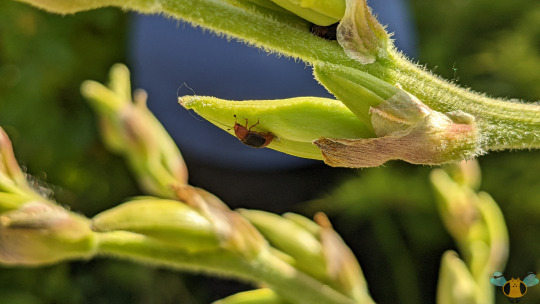









Brown Yucca Beetle - Caplothorax melanopterus
Here we are, the last post of the year 2022! This has been a great year for the photography side of things with old favorites getting a closer examination while many new species joined the blog. Hopefully there will be many more new insect to share with you in the year to come. Thank you all for coming to the blog to visit the insects! To wrap up the year, let’s look at a small insect summer party on the yucca flowers! Snacks are plentiful and there’s always someone to mingle with. Unfortunately they are no chairs, so you’ll need to keep moving around if you are one of these Yucca Beetles...or you’ll have to find a crevice on the plant to hide in. Look closely at some of these pictures and see what you can find. Alongside those seeking shade and peace from the outside, other individuals feed on the flowers while others form mating pairs (top of Picture 7) and ready to secure their eggs in the developing flowers of the yucca plant. When the larvae hatch, they have immediate access to the plant’s organs and petals: nutrient-rich food! The adults don’t seem taken by the yucca plant in the same way and may only be interested in feeding on nectar, if there’s enough or any to go around.
If they need more substantial food, the adult Beetles fly and search for fresh, ripened or decaying fruit. Decaying fruit seems to be their preference, but the Carpophilus Beetles have been noted as pests to stored fruits. Whether these have a love for fresh fruit is unknown to me, but if there are fruit trees in your area, see who comes to eat. And don’t skip out on the fallen fruit. Despite their small size, these Beetles are notoriously determined to find food and will do so as fast as their wings will carry them! If fruit won’t do, the adult (since there are) Sap Beetles will benefit from a leaky tree. To bring it back to the larvae, after they’ve had their fill and reached full size, they will drop to the ground and pupate in the soil, emerging again in late spring, mileage may vary. Just like other insects overwinter, so to do these, but unlike other insects the Yucca Beetles here have been dug up in multiple stages of development. I.e. they have been found as larvae, pupae and adults when their new year begins. As said before, mileage may vary, but I’m expected to find them again this coming year. While they feed and enjoy the yucca plants in our yard, their activity never compromises the plants fully, and they remain strong enough to produce flowers and seed pods.
Pictures were taken on July 3 and 8, 2022 with a Google Pixel 4. Enjoy a wonderful New Year’s celebration! See you all in 2023!
#jonny’s insect catalogue#ontario insect#beetle#brown yucca beetle#sap beetle#coleoptera#insect#toronto#july2022#2022#entomology#nature#invertebrates
1 note
·
View note
Text
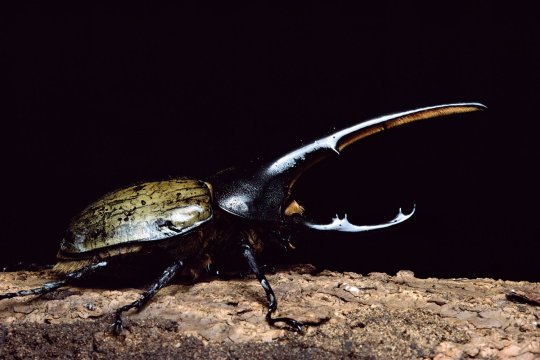


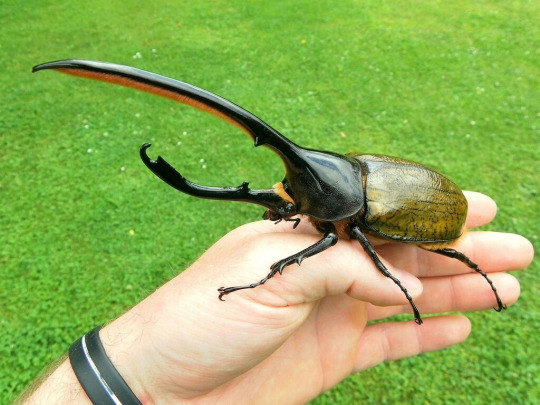



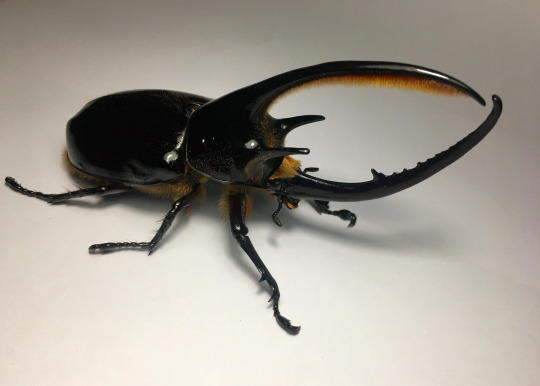

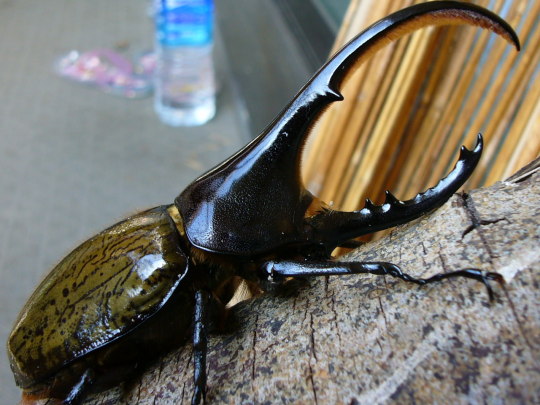
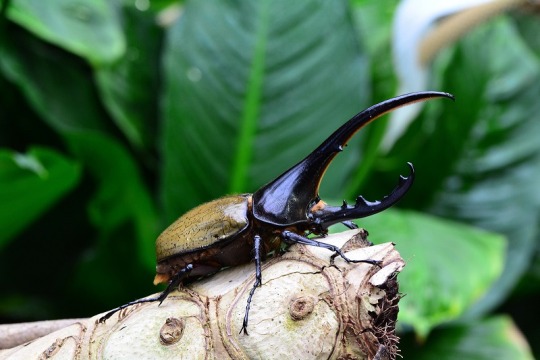

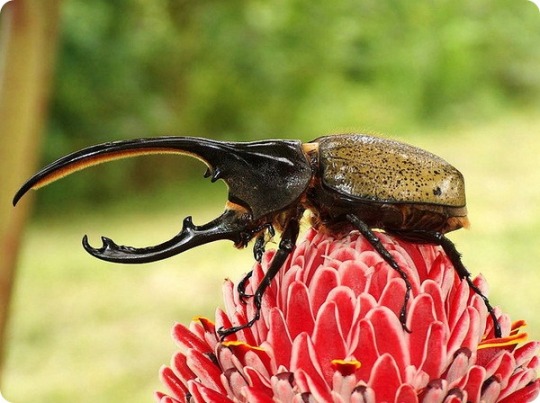
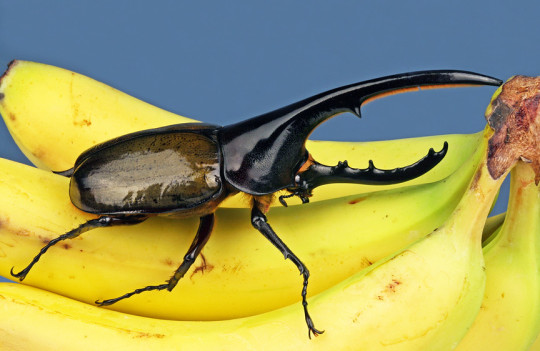

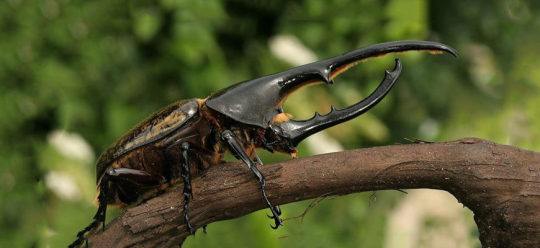

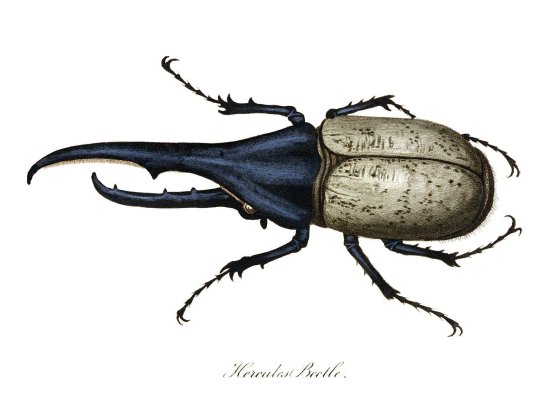

Жук-геркулес – необычное насекомое, которые встречается на берегах Карибского моря, на территориях Центральной Америки и южноамериканского континента. При среднем размере тела более 16 см. он считается одним из самых крупных жуков на планете. При этом размах крыльев у самцов редко бывает меньше 20 сантиметров. Самочки мельче самцов и могут достигать в длину не более 8 см. и у них нет рогов. Свое название этот жук получил благодаря известному древнегреческому герою Гераклу (по лат. Herculēs), который прославился своей невероятной силой. Жуки-геркулесы— «тяжелоатлеты» и способны переносить тяжести, в 850 раз превышающие их собственный вес.
Окраска жука зависит от влажности окружающей среды. Геркулес имеет жесткие надкрылья. Они могут быть темно-оливкового, желтого, желто-оливкового цвета и даже черными. Тело покрыто редкими рыжими волосками. На голове у жука находятся 2 рога, один большой сверху и второй, поменьше, ниже. Верхний рог имеет несколько зубцов.
Геркулесы – летающие жуки, однако крылья применяют лишь по мере необходимости. Благодаря цепким лапкам эти жуки отлично передвигаются по деревьям, цепляясь за кору.Жуки-геркулесы абсолютно безвредны для людей. Они не несут угрозу и сельскохозяйственной деятельности человека.Жуки-геркулесы питаются опавшей листвой, старой древесиной и древесным соком, а также перезревшими фруктами и ягодами. Продолжительность жизни имаго, так называется взрослое насекомое, равна 6 месяцев.
The Hercules beetle is an unusual insect found on the shores of the Caribbean Sea, Central America and the South American continent. With an average body size of more than 16 cm, it is considered one of the largest beetles on the planet. At the same time, the wingspan of males is rarely less than 20 centimeters. Females are smaller than males and can reach a length of no more than 8 cm. and they do not have horns. This beetle got its name thanks to the famous ancient Greek hero Hercules (Latin: Herculēs), who was famous for his incredible strength. Hercules beetles are "weightlifters" and are able to carry weights 850 times their own weight.
The color of the beetle depends on the humidity of the environment. Hercules has rigid elytra. They can be dark olive, yellow, yellow-olive and even black. The body is covered with sparse red hairs. The beetle has 2 horns on its head, one large on top and the second, smaller, below. The upper horn has several teeth.
Hercules are flying beetles, but wings are used only as needed. Thanks to their tenacious paws, these beetles move perfectly through trees, clinging to the bark.Hercules beetles are absolutely harmless to humans. They also do not pose a threat to human agricultural activities.Hercules beetles feed on fallen leaves, old wood and tree sap, as well as overripe fruits and berries. The life span of an imago, as an adult insect is called, is 6 months.
Источник:/www.zoopicture.ru/zhuk-gerkules/, /beatlename.ru/beatle18=zhuk-gerkules, /wildfauna.ru/zhuk-gerkules, /zenun.ru/zhuk-gerkules/,/redbook.su/nasekomye/zhuk-gerkules, /kartinki.pics/pics/697-zhuk-gerkules-art.html.
#nature#video#insect video#insect photography#beetle#Hercules beetle#plants#flowers#macro photo#drowing#illustration#природа#видео#фото насекомых#насекомые#жук#Жук-геркулес#растения#цветы#макрофото#арт#иллюстрация
134 notes
·
View notes
Text
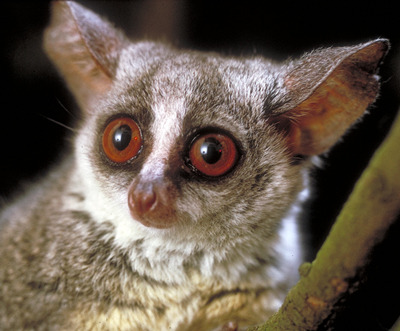

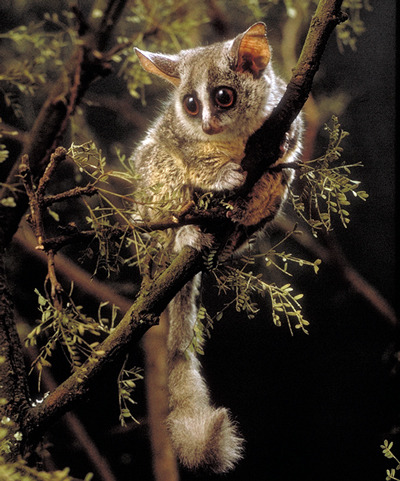
Go Go Southern Lesser Galago!
Also known as the South African galago or the mohol bushbaby, the southern lesser galago (Galago moholi) is a small primate from the Galagidae, or bushbaby family. As the name implies, they are located only in southern Africa, from northern South Africa up to Rwanda. Their preferred habitats are savannahs and semi-arid woodlands, where they can often be found high in the canopy, and they are particularly associated with Acacia trees.
The mohol bushbaby is one of the smaller members of its group; at full height they stand no taller than 15 cm (6 in) and weigh only 225 g (7.9 oz). In fact, their tail is longer than their body, easily reaching 23 cm (9 in) in length. While it isn't prehensile, the tail is still an important tool for climbing as it gives G. moholi an excellent sense of balance. Along with their incredible tails, the South African galago also has one of the largest sets of ears of any primate, proportional to its size; these ears can move independently to help the southen lesser bushbaby avoid predators. G. moholi's final distinguishing feature are their eyes, which are incredibly large and a distinctive orange color. Individuals themselves tend to be gray or light brown, which helps them blend in with their surroundings.
South African galagos are almost strictly nocturnal. At night, they forage through the canopy for moths and beetles. These bits of protein, however, are supplemental; the mohol bushbaby's primary source of food is gum, or hardened sap from the Acacia plant. G. moholi has several adaptations allowing it to specialize in gum extraction, including scraping teeth on the lower mandible; long, rough tongues; and digestive systems that have evolved to break down and ferment the tough substance. Because they have very few defense mechanisms, southern lesser galagos are a common prey for many nocturnal species like eagles, owls, snakes, mongooses, civets, and gennets.
One of the few ways the South African bushbaby avoids predation is through its social units. Groups of 2-7-- typically composed of a female, her young, and a few non-reproductive relatives-- forage together. In these groups, their collective night vision and highly-developed hearing allow them to detect and alert each other to predators long before the threat is immanent. While individuals forage seperately, they keep in contact via loud, high pitched calls that can serve as a warning for predators, a point of contact between mother and offspring, or a territorial warning between males.
Male G. moholi live seperately from social groups, and are highly aggressive against other males invading their territory. This area often overlaps that of several female-led groups, but they only come in contact with each other during the mating season. Unusually, the species has two mating seasons through the year; from January to Februrary (late summer) and from October to November (early spring). Following a gestation period of 120 days, females produce a single set of twins each mating season. Each set is weaned after approximately 3 months, and young become fully mature at 300 days. Female offspring may join the mother's group, while males leave to establish their own territory. In the wild, an individual may live up to 16 years.
Conservation status: The IUCN has classified the South African bushbaby as Least Concern. Studies have indicated that the population is stable and, in some areas, increasing. However, in other areas the species is threatened by habitat loss and possibly capture for the pet and bushmeat trade.
If you like what I do, consider leaving a tip or buying me a ko-fi!
Photos
Gerald Doyle
Peter Webb via iNaturalist
#Southern lesser galago#south african bushbaby#Primates#Galagidae#galagos#bushbabies#mammals#savannah mammals#tropical forest mammals#africa#south africa#animal facts#biology#zoology
162 notes
·
View notes
Text
heres one of my FAV bugs evrr.. the HERCULES BEETLE!!!


They’re a species of rhino beetle and are SUPER SUPER AWESOME!! The males can reach up to 7 inches, the horns making up around 1/3 of their body length, with only males having the horns. Larvae feeds on rotting wood and can reach up to 4.5 inches in length!!! Adults feed on rotting or fresh fruit and tree sap!!
Adults can lift 850 TIMES THEIR WEIGHT! These bugs are definitely one of my favs, i just think theyre so neat :3
#sorry i havent posted in a long time!!!#im back!!!#bugs#beetles#rhino beetle#hercules beetle#ecology#nature#insects#arthropods#biology
139 notes
·
View notes
Note
"KARU!! HI!!"
Gideon was excited to see his adoptive older-brother. He was on his way to do something else but it wasn't super important he was sure. He jogs over to beam up at him.
"Can you help me find a Rhinoceros Beetle? Sanemi has one... I'm uh... Sort of looking for common ground with him? I also think they're really neat! And... I want Sanemi to not want to kill me." :3
“Gideon!! Hey!!”
Hikaru looks up towards the sound of the silver-haired Slayer’s voice, grinning. He stands up from where he’d been poking at some rocks, brushing the dirt off his hands on the canvas of his pants.
“Good to see you! You’re looking for a rhinoceros beetle? I’m your guy!!”
Giving Gideon a friendly clap on the shoulder, Hikaru gestures for him to follow as they trot towards the woods outside HQ.
“So rhinoceros beetles are all herbivores, and they eat things like fruit, sap, leaf litter and dead plant matter, and the best place to look for them is cool, damp areas during the day. They might hiss at you if you pick them up, isn’t that cool? It’s not actually a vocal noise, they’re rubbing their elytra against their abdomen!”
Hikaru chatters away, happily infodumping about their target insect as they make their way through the forest.
26 notes
·
View notes




